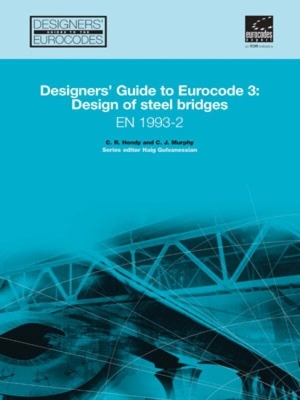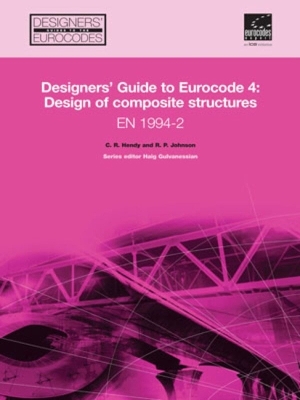Designers Guides to the Eurocodes
3 total works
Designers' Guide to Eurocode 8: Design of buildings for earthquake resistance
by Ezio Faccioli, Michael N. Fardis, Amr S. Alnashai, Eduardo Carvalho, Andre Plumier, Paolo Pinto, and Haig Gulvanessian
Published 1 January 2005
This series of Designers Guides to the Eurocodes provides comprehensive guidance in the form of design aids, indications for the most convenient design procedures and worked examples. The books also include background information to aid the designer in understanding the reasoning behind and the objectives of the codes. All of the individual guides work in conjunction with the Designers' Guide to EN1990 Eurocode: Basis of Structural Design.
Designers' Guide to EN 1993-2. Eurocode 3: Design of steel structures. Part 2: Steel bridges
by Chris R. Hendy, Cj Murphy, and Haig Gulvanessian
Published 1 January 2007
EN 1993-2, also known as the Eurocode 3 for steel bridges, describes the principles and requirements for safety, serviceability and durability of concrete bridges. This Designers' Guide provides the user with guidance on the interpretation and use of EN 1993-2 and also the relevant provisions in EN 1993-1-1, EN 1993-1-5, EN 1993-1-8, EN 1993-1-9, EN 1993-1-10 and EN 1993-1-11. Worked examples are provided to illustrate the use of the rules. It also explains the relationship with other Eurocode parts to which it refers (ENs 1990, 1991).
Eurocode 4: Design of composite steel and concrete structures. Part 2 General rules for bridges
by Chris R. Hendy, Professor R. Johnson, and Haig Gulvanessian
Published 1 January 2006
This book is an authoritative guide to the technical background and practical aspects of this European code of practice that will supersede corresponding national codes in the countries that are members of the European Standardisation Organisation - CEN (Comite Europeen de Normalisation).This book provides guidance on the interpretation and use of EN 1994-2 and presents worked examples. It deals with the issues that are encountered in typical steel and concrete composite bridge designs, and explains the relationships between EN 1994-1-1, EN 1994-2 and the other Eurocodes.


